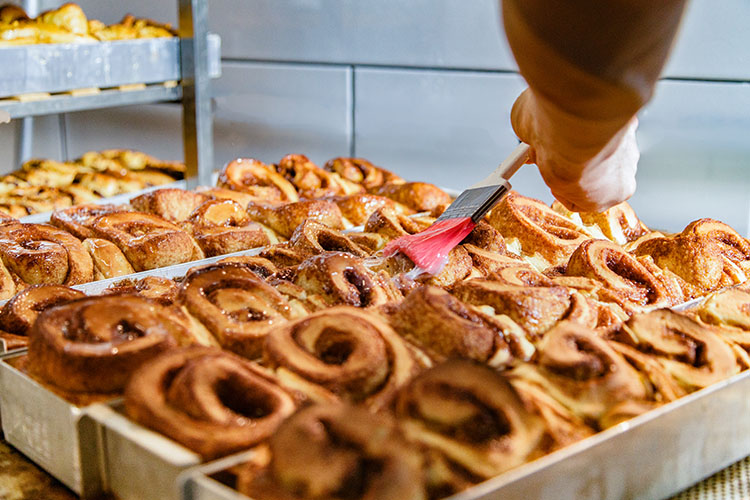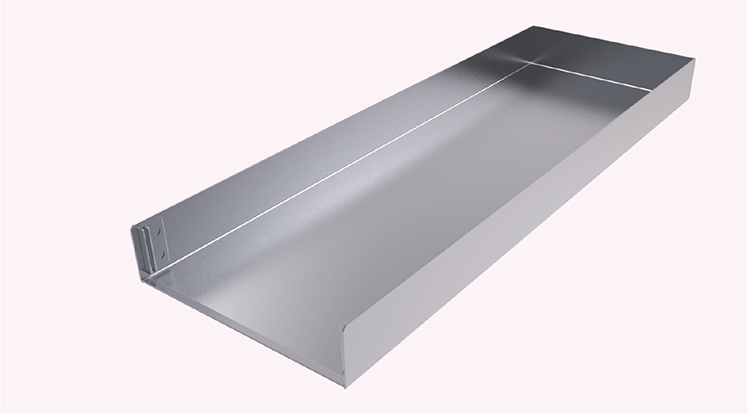
One characteristic shared by different types of bakeware, from trays to pans or cake molds is their mission to make the baker’s life easier.
Having your cake
Traditional cake pans, bundt cake pans, cupcake or mini cake pans, springform pans, silicone cake molds, and sheet cake pans – bakeware for cakes is as diverse as the delicious products that are their guests while baking or even afterward. Correctly caring for their delicate visitors is what makes all types of trays essential in supporting bakers. They can be sponge cake trays that carry the cake from the workshop to the store and also make product presentation literally ‘a piece of cake’. Or, molded trays for industrial use, where imprints ensure that every product produced has the same shape to ease packaging and match customer expectations. Non-stick coatings suited to the requirements of individual products are also part of the same conversation, Marc Schulze, Key Account Manager Export, Anneliese, says.
The shape, size and material of the pan directly influence the baking process. Pan selection depends on the cake’s shape and size. For ‘easy’ shapes such as rectangular or round, one can choose between aluminum and alusteel. “While aluminum heats up quickly and is very lightweight, alusteel can store heat for longer compared to aluminum, which gives a different baking result,” Schulze explains. However, for more complex shapes, such as bundt cakes, alusteel is the better option, as it can be pressed into shape easier and can be molded into various shapes, while aluminum would not stand the pressure of stamping, he adds.

“Most bakers ask for our patented F-profile system to remove the crossbar for display, because it offers the easiest handling and is more robust than other options”
Marc Schulze, Key Account Manager Export, Anneliese
That’s not all, production volumes are also a part of the equation when choosing a pan for cakes. Anneliese differentiates between three levels of operations: “First, we have bakers who are happy with individual molds or trays because their production volume does not require a convection wagon oven or a different type of an equivalent baking area. As the business grows and such means of production become interesting, we can work with the baker to design their individual equipment. For example, we could put several cake molds on a strap to be inserted on a rack. This makes handling efficient, as the baker can use their hands to handle three-four cakes instead of only one, in a single mold. Finally, the third level concerns the industrial producers. Of course, pan straps and trays can be customized to fit any industrial bakery line. Those would have a (reinforced) frame and edge bumpers. Moreover, solutions for automated stacking or handling are requested frequently at the moment,” Schulze shares.
Ingredients in cake formulations pose no particular challenges when it comes to pan selection, with the notable special care for free-from products. One consideration that should be kept in mind, however, is that, even if the pan can have relatively complex shapes, e.g. animals, or cars, the cake made with that mold usually lacks details and can look very different from the original concept. “For example, while the eyes of the teddy bear might have irises in the pan, the resulting cake will not have a visible iris. Sharp and small outlines usually don’t work very well,” Anneliese outlines. The company can provide 3D-printed pans at a relatively low cost for testing.
Coatings, however, are an important factor. Cakes usually contain fat, sugar and egg; more often than not, all three. Even a single one of these ingredients can kill most non-stick coatings. Anneliese recommends sharing information about the ingredients in advance with their experts, for appropriate pan recommendations. “However, only real-life tests over several months, or an equivalent number of baking cycles, will tell the whole truth about the suitability or failure of the coating,” Schulze adds. Looking at these difficulties, it becomes apparent why many bakers, regardless of their size and daily production output, do not choose a non-stick coating but use release agents instead. “However, the Anneliese team is convinced that non-stick coatings save work, time, and resources in the long run.”
The most requested type from Anneliese is the simple sponge cake tray still, which can be customized in any size – to fit anything from window displays to ovens and transportation boxes. “Most bakers ask for our patented F-profile system to remove the crossbar for display, because it offers the easiest handling and is more robust than other options. Especially in Germany, people love sponge cakes with different fillings, toppings and icings. Plus, we’re always happy to see people get creative and reinvent the way to use them,” the specialist explains.
In and out of the tray
The depanning method will also depend on the type of cake and production requirements of the line. Sponge cakes can be simply removed from the tray in front of the customer with a cake shovel, for example. Individual pieces are cut either in the factory or at the point of sale, but the cakes stay inside the trays and are also presented inside the tray. This supersedes some production steps and packaging, while also giving the customer a feeling of freshness and proximity to the workshop where the cake was made.
For cleaning any cake trays or molds of any shape and size, Anneliese lists the following rules:
+ Cleaning them regularly – depending on how dirty they are and/or the frequency of baking
+ Avoiding moisture
+ Avoiding lye or acid
+ Selecting an appropriate, ph-neutral cleaning agent with a soft water jet, and using a soft cloth or brushes to clean them
+ Taking pastries out of molds immediately after baking (to avoid moisture as they cool down)
+ If the pans are not coated, greasing them for an anti-
corrosion effect. If they are coated, greasing must be avoided, as it will reduce the coating’s lifetime.
+ Ensuring the trays and pans are dry before storing them


